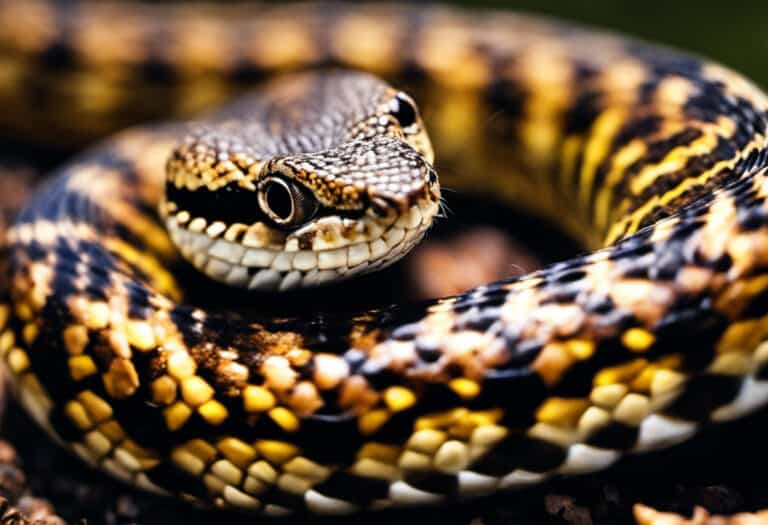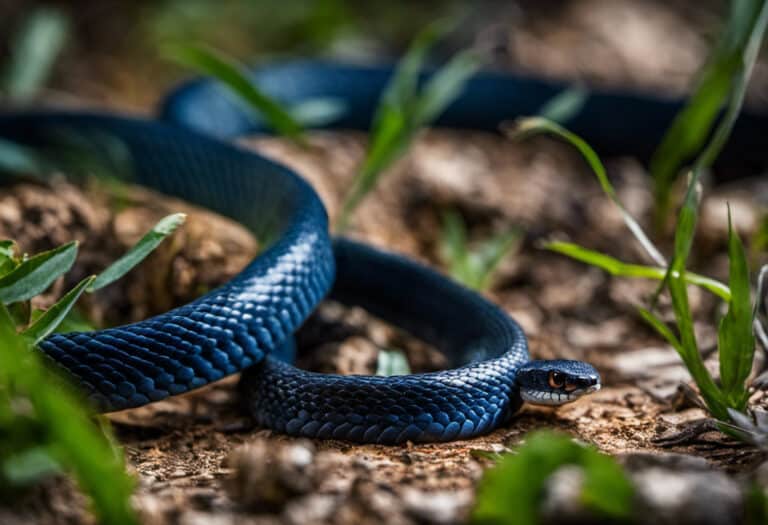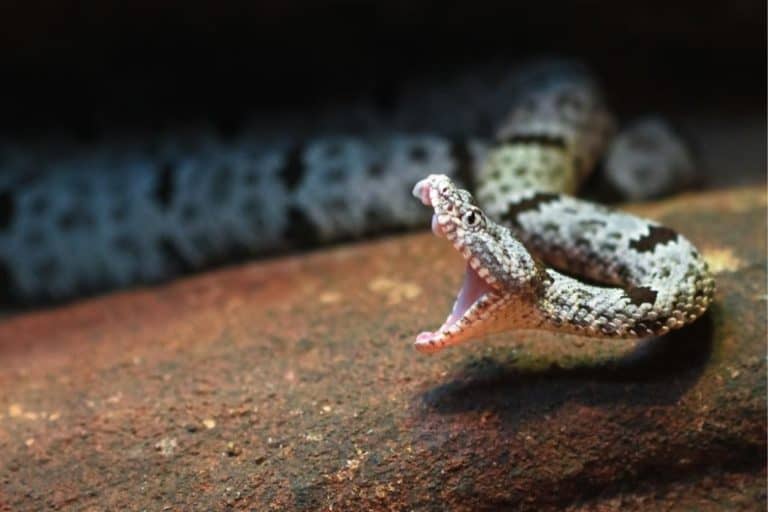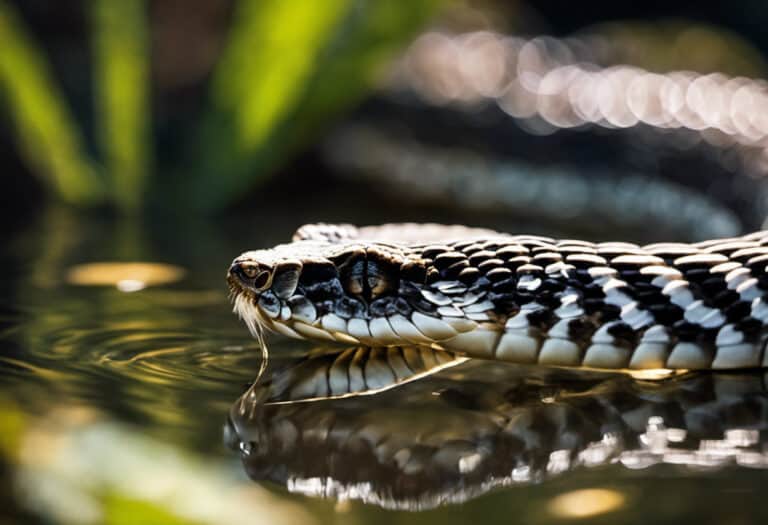Does Snake Repellent Work on Frogs?
Are you tired of dealing with frogs invading your yard like unwanted guests at a party? Wondering if snake repellent could be the solution to keep them at bay?
In this article, we will explore the effectiveness of snake repellent in deterring frogs. Discover the best strategies for identifying frog species, adjusting yard features, and preventing frog reproduction.
Stay tuned to find out if snake repellent can help you reclaim your yard and enjoy a frog-free oasis.
Key Takeaways
- Snake repellents can be effective in deterring frogs from an area.
- Using snake repellents can be a non-harmful method of keeping frogs away.
- Snake repellents create discomfort for frogs and can encourage them to settle elsewhere.
- Snake repellents can be used as a deterrent to prevent frogs from reinfesting the yard.
Identifying and Understanding Frog Species
You should identify the specific frog species in your yard to determine the most effective methods for addressing the issue.
Frog species identification is crucial in understanding their behavior and habits. By knowing the specific species, you can tailor your approach to their unique characteristics.
Different frog species have varying preferences for water sources, vegetation, and food, so understanding their behaviors will help you develop targeted strategies.
For example, some species may be attracted to standing water, while others may seek out damp areas or overgrown plants.
Adjusting Yard Features to Deter Frogs
To deter frogs from your yard, there are a few methods you can try. Firstly, consider placing rubber snakes in your pool or pond. This method utilizes the fear response of frogs towards snakes, which may discourage them from entering the water features.
Another option is using snake repellent in ponds or water features. Snake repellents typically contain chemicals that emit strong odors or taste deterrents, which can deter not only snakes but also frogs. However, it’s important to note that the effectiveness of snake repellents on frogs may vary depending on the specific product and frog species.
Additionally, having a cat or dog present in your yard may also help deter frogs. The presence of these animals can create a predator presence, causing frogs to feel threatened and seek out safer environments.
Draining Water Sources to Encourage Frog Migration
If you drain the water sources in your yard, it can encourage frogs to migrate to other areas. This is because frogs are attracted to water sources for breeding and feeding purposes. By eliminating these water sources, you’re essentially removing their essential habitat.
Here are four reasons why draining water sources can aid in frog migration:
- Lack of breeding sites: Frogs require water to lay their eggs and for tadpoles to develop. By draining the water sources, you’re removing potential breeding sites, forcing the frogs to seek alternative locations.
- Disruption of feeding grounds: Frogs rely on water sources for finding food, such as insects and small invertebrates. Draining these water sources reduces the availability of food, prompting the frogs to move elsewhere in search of nourishment.
- Reduction of hiding places: Water sources often provide hiding places for frogs, protecting them from predators and extreme weather conditions. By draining the water, you eliminate these hiding spots, making the area less desirable for frogs to inhabit.
- Encouraging natural dispersal: Draining water sources can create a barrier for frogs, prompting them to disperse and find new habitats. This can help prevent overcrowding and the potential negative impacts associated with high frog populations in a single area.
Preventing Frog Reproduction and Growth
To control frog growth, it’s important to disrupt their reproductive cycle. Begin by locating and removing frog eggs and tadpoles from water sources in your yard. Dry up areas where frogs lay their eggs to prevent them from hatching.
By eliminating vegetation or disturbing breeding sites, you can further disturb the frog life cycle. This will significantly reduce the number of frogs in your yard.
Taking these preventive measures is crucial in controlling frog reproduction and growth. Remember to be humane in your approach, ensuring the well-being of both the frogs and your property.
Humane Methods for Removing Frogs
Sprinkling coffee grounds on your lawn and gardens can discourage frogs from staying in your yard. Here are four humane methods for removing frogs from your property:
- Humane relocation: If you encounter frogs in your yard, you can safely capture and relocate them to a more suitable habitat. Make sure to release them in an area with similar environmental conditions.
- Natural predators: Encouraging natural predators like birds or snakes in your yard can help control the frog population. Birds, snakes, certain fish species, and even predatory insects like dragonflies can prey on frogs and their eggs.
- Safe removal techniques: Use humane traps to capture frogs and release them in appropriate natural habitats. Avoid using harmful chemicals or methods that can harm other wildlife.
- Consult an expert: If you’re unsure about how to handle frog removal, consider seeking professional assistance. Exterminators can provide expert guidance and ensure the safe removal of frogs from your yard.
Understanding the Issue and Assessing the Situation
To effectively manage the frog population in your yard, it’s important to understand the issue and assess the situation by determining why frogs have chosen your property as their home. Frogs are attracted to water sources and overgrown plants, which provide them with both shelter and a reliable food supply.
Trimming plants and grass reduces hiding places for frogs, making your yard less appealing to them. Additionally, eliminating standing water sources and draining water features can discourage frogs from residing in your yard.
Understanding the behavior and habits of the frogs in your yard will help you implement the appropriate mitigation strategies. By taking these steps, you can create a less inviting habitat for frogs and reduce their presence in your yard.
Non-Harmful Methods of Frog Removal
When it comes to removing frogs from your yard, there are non-harmful methods that you can employ.
Capturing and relocating frogs is one such method. By using humane traps and methods, you can safely remove frogs from your property without causing them harm.
Capturing and Relocating
If you’re looking to capture and relocate frogs, using humane traps and releasing them in suitable natural habitats is a safe and effective method. Here are four key tips for successful capturing and relocation:
- Choose the right trap: Use a trap specifically designed for capturing frogs, such as a mesh box with a hinged door. Ensure the trap is large enough to accommodate the size of the frogs you’re targeting.
- Bait the trap: Use an enticing bait, such as live insects or small pieces of fruit, to attract the frogs into the trap. Place the bait near the entrance to encourage them to enter.
- Handle with care: When capturing the frogs, approach them slowly and gently to avoid causing stress or injury. Wear gloves to protect yourself and the frogs, and be mindful of their delicate skin.
- Release in suitable habitats: Choose natural habitats that provide the necessary resources, such as water sources and shelter, for the specific frog species. Release the frogs gently, allowing them to acclimate to their new surroundings.
Humane Traps and Methods
Using humane traps is an effective and ethical way to capture and relocate frogs without causing harm. Safe relocation of frogs is important for both the well-being of the frogs and for maintaining a balanced ecosystem.
When using humane traps, it’s crucial to choose traps that are appropriate for the size of the frogs you’re targeting. Once the frogs are captured, they should be immediately relocated to suitable natural habitats that can support their survival.
It’s also important to consider natural deterrents to prevent frogs from returning to your property. These can include creating a less inviting environment by reducing insect populations, removing sources of standing water, and maintaining a well-maintained yard with trimmed vegetation.
Repellents and Barriers for Frog Control
Snake repellents can be effective in deterring frogs from your yard, as they can also repel frogs. Here are four reasons why snake repellents can work as a barrier for frog control in your garden:
- Altering the scent: Snake repellents typically contain sulfur-based compounds that emit a strong odor. This odor can be unpleasant for frogs, deterring them from entering your yard.
- Creating discomfort: Some snake repellents contain ingredients that cause irritation or discomfort to frogs. This discomfort can make your yard less attractive to frogs, leading them to seek alternative habitats.
- Mimicking predators: Snake repellents often mimic the scent of natural predators of frogs, such as snakes. This can trigger a fear response in frogs, causing them to avoid the treated area.
- Acting as a physical barrier: Snake repellent products can be applied as a barrier around water features or other areas where frogs are unwanted. The repellent forms a protective layer that frogs are less likely to cross.
Stopping Frog Reproduction to Reduce Population
To effectively reduce the frog population in your garden, it’s crucial to focus on stopping frog reproduction. By identifying and removing frog eggs and tadpoles, you can disrupt their life cycle and prevent them from developing into adult frogs.
This proactive approach will help break the reproductive cycle and ultimately decrease the overall frog population on your property.
Impact of Removing Eggs
Removing frog eggs from water sources is crucial in preventing the development of tadpoles and reducing the overall frog population in your yard. Here are four reasons why removing frog eggs has a significant impact:
- Disrupting the life cycle: By removing frog eggs, you interrupt the reproduction cycle of frogs. Without the presence of water, the eggs can’t hatch and develop into tadpoles.
- Population control: Removing frog eggs helps in controlling the population of frogs in your yard. By preventing the eggs from hatching, you limit the number of adult frogs that will be present in your surroundings.
- Environmental balance: Excessive frog populations can disrupt the ecological balance in your yard. Removing eggs helps in maintaining a healthy ecosystem by preventing an overabundance of frogs.
- Alternative to snake repellent: Instead of relying on snake repellent, removing frog eggs provides a more effective and humane method of deterring frogs from your yard, without the potential harm to other wildlife.
Disrupting the Frog Life Cycle
To effectively disrupt the breeding of frogs and minimize their habitats, there are several strategies you can employ.
Firstly, consider removing or disturbing vegetation and breeding sites where frogs typically lay their eggs. This can be done by clearing away dense vegetation, such as tall grasses and shrubs, that provide hiding places for frogs.
Additionally, minimize the availability of stagnant water sources, as these are attractive breeding grounds for frogs. Drain any standing water and keep ponds or pools clean and maintained. By reducing the amount of suitable breeding sites, you can disrupt the frog life cycle and discourage their reproduction.
Lastly, it’s crucial to regularly monitor and maintain your yard to ensure that it remains less inviting to frogs and disrupts their breeding patterns.
Frequently Asked Questions
Can Snake Repellent Harm or Kill Frogs?
Snake repellent alternatives can be effective for controlling frogs. However, it’s important to note that snake repellents may not harm or kill frogs directly. Consider using other frog control methods to ensure a humane approach.
Is It Safe to Use Chlorine in Ponds to Deter Frogs?
Chlorine can be used in ponds to deter frogs, but it may not be safe for other aquatic life. Consider alternatives like saltwater or vinegar sprays, physical barriers, or natural predators to create a frog-free environment.
How Long Does It Take for Frog Eggs to Dry Out and Become Non-Viable?
It typically takes around 2-3 days for frog eggs to dry out and become non-viable. During this time, the eggs lose moisture and are unable to develop into adult frogs.
Are There Any Natural Predators of Frogs That Can Be Attracted to the Yard?
Attracting natural predators to your yard can help control frog populations. Birds, snakes, certain fish species, turtles, amphibians, and predatory insects like dragonflies are some examples of natural predators that can help keep frogs in check.
What Are the Potential Risks of Using Saltwater Sprays as Frog Deterrents?
Using saltwater sprays as frog deterrents may have potential risks and environmental impacts. The high salt concentration can harm plants and soil, affecting the overall ecosystem. Consider alternative methods to deter frogs without causing harm.
Conclusion
In conclusion, while snake repellent may be effective in deterring snakes, it isn’t a reliable solution for repelling frogs.
To effectively control frog populations in your yard, it’s important to identify and understand the species, adjust yard features to make it less inviting, drain water sources to encourage migration, and prevent reproduction.
Humane methods such as catching and relocating frogs, using coffee grounds and saltwater, as well as repellents and barriers can be helpful. Consider consulting an exterminator if necessary.
Take action now to reclaim your yard from excessive frog populations.






